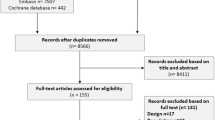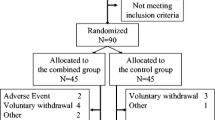Abstract
Insomnia is a heterogeneous, highly prevalent condition that is associated with a high level of psychiatric, physical, social and economic morbidity. The treatment of insomnia involves pharmacological and non-pharmacological interventions. The mainstay of pharmacological treatment of insomnia has been the benzodiazepines, the introduction of which represented a significant improvement over the barbiturates and chloral hydrate. Although benzodiazepines have been shown to be efficacious in treating insomnia, they have also been associated with a number of adverse effects including tolerance, dependence, withdrawal and abuse potential, impairment in daytime cognitive and psychomotor performance (including an increased risk of accidents and falls), adverse effects on respiration and the disruption of normal sleep architecture with reduction in both slow wave sleep and rapid eye movement. In the last decade, the treatment of insomnia has been supplemented by the introduction of a number of non-benzodiazepine hypnotics including zolpidem, zopiclone and, most recently, zaleplon.
Zaleplon possesses a unique pharmacological profile, with an ultra-short half-life of about 1 hour, and selective binding to the BZ1(ω1) receptor subtypes of the GABAA receptor. This unique pharmacological profile predicts a number of pharmacodynamic properties that account for a unique benefit-risk profile. Consistent with these predictions, zaleplon has been shown in a number of studies to be efficacious in promoting sleep initiation, but less so in promoting sleep maintenance. The adverse effects associated with zaleplon have been shown to be more rapidly resolved and/or lesser in magnitude than those associated with benzodiazepines (including triazolam) and the longer acting non-benzodiazepine hypnotics (zolpidem and zopiclone). This improved risk profile includes: the effects of zaleplon on psychomotor and cognitive performance; tolerance, withdrawal and rebound; respiratory depression; sleep architecture; and other treatment-emergent adverse effects. The unique benefit-risk profile of this agent may be particularly suitable for certain patients with insomnia and provides yet another option in the management of this impairing condition.
Similar content being viewed by others
References
Montplaisir J, Hawa R, Moller H, et al. Zopiclone and zaleplon vs benzodiazepines in the treatment of insomnia: Canadian consensus statement. Hum Psychopharamacol Clin Exp 2003; 18: 29–38
Terzano MG, Rossi M, Palomba V, et al. New drugs for insomnia: comparative tolerability of zopiclone, zolpidem and zaleplon. Drug Saf 2003; 26(4): 261–82
NCSDR Working Group. Insomnia: assessment and management in primary care. Sleep 1999; 22 Suppl. 2: S402–8
American Psychiatric Association. Diagnostic and statistical manual of mental disorders. 4th ed., text revision. Washington, DC: American Psychiatric Association, 2000
American Academy of Sleep Medicine. International classification of sleep disorders, revised: diagnostic and coding manual. Chicago (IL): American Academy of Sleep Medicine, 2001
Ohayon MM. Epidemiology of insomnia: what we know and what we still need to learn. Sleep Med Rev 2002; 6(2): 97–111
Benca RM. Consequences of insomnia and its therapies. J Clin Psychiatry 2001; 62Suppl. 10: 33–8
Schwartz S, Anderson MW, Cole SR, et al. Insomnia and heart disease: a review of epidemiologic studies. J Psychosom Res 1999; 47(4): 313–33
Zammit GK, Weiner J, Damato N, et al. Quality of life in people with insomnia. Sleep 1999; 22Suppl. 2: S379–85
Stoller MK. The socio-economics of insomnia: the materials and the methods. Eur Psychiatry 1997; 12Suppl. 1: 41s–8s
Chilcott LA, Shapiro CM. The socioeconomic impact of insomnia: an overview. Pharmacoeconomics 1996; 10Suppl. 1: 1–14
Data on file, Shapiro CM, 2004
Levin Y. “Brain music” in the treatment of patients with insomnia. Neurosci Behav Physiol 1998; 28(3): 330–5
Shapiro CM, Strygin K, Levin Y, et al. The effects of patterned neurofeedback on sleep continuity [abstract]. Sleep 2003; 26(abstract supplement): A397
Kupych-Woloshyn N, MacFarlane J, Shapiro CM. A group approach for the management of insomnia. J Psychosom Res 1993; 37Suppl. 1: 39–44
Chesson AL, Anderson WM, Littner M, et al. Practice parameters for the nonpharmacologic treatment of chronic insomnia. Sleep 1999; 22(8): 1–6
Smith MT, Perlis ML, Park A, et al. Comparative meta-analysis of pharmacotherapy and behaviour therapy for persistent insomnia. Am J Psychiatry 2002; 159(1): 5–11
Holbrook AM, Crowther R, et al. Meta-analysis of benzodiazepine use in the treatment of insomnia. CMAJ 2000; 162(2): 225–33
Dämgen K, Lüddens H. Zaleplon displays a selectivity to recombinant GABAA receptors different from zolpidem, zopiclone and benzodiazepines. Neurosci Res Commun 1999; 25(3): 139–48
Noguchi H, Kitazumi K, Mori M, et al. Binding and neuropharmacological profile of zaleplon, a novel nonbenzodiazepine sedative/hypnotic. Eur J Pharmacol 2002; 434: 21–8
Sanger DJ, Morel E, Perrault G. Comparison of the pharmacological profiles of the hypnotic drugs, zaleplon and zolpidem. Eur J Pharmacol 1996; 313: 35–42
Sanger DJ, Griebel G, Perrault G, et al. Discriminative stimulus effects of drugs acting at GABAA receptors: differential profiles and receptor selectivity. Pharmacol Biochem Behav 1999; 64(2): 269–73
Sanna E, Busonero F, Talani G, et al. Comparison of the effects of zaleplon, zolpidem, and triazolam at various GABAA receptor subtypes. Eur J Pharmacol 2002; 451: 103–10
Beer B, Ieni JR, Wu WH, et al. A placebo-controlled evaluation of singe, escalating doses of CL 284,846, a non-benzodiazepine hypnotic. J Clin Pharmacol 1994; 34(4): 335–44
Drover D, Lemmens H, Naidu S, et al. Pharmacokinetics, pharmacodynamics, and relative pharmacokinetic/pharmacodynamic profiles of zaleplon and zolpidem. Clin Ther 2000; 22(12): 1443–61
Greenblatt DJ, Harmatz JS, von Moltke LL, et al. Comparative kinetics and dynamics of zaleplon, zolpidem and placebo. Clin Pharmacol Ther 1998; 64(5): 553–61
Rosen AS, Fournié P, Darwish M, et al. Zaleplon pharmacokinetics and absolute bioavailability. Biopharm Drug Dispos 1999; 20: 171–5
Israel AG, Kramer JA. Safety of zaleplon in the treatment of insomnia. Ann Pharmacother 2002; 36: 852–9
Wickland C, Patat A. The safety and pharmacokinetics of zaleplon in hepatically impaired patients [abstract]. Sleep Res Online 1999; 2Suppl. 1: 171
Wickland C, Patat A. The pharmacokinetics and safety of zaleplon in patients with renal impairment [abstract]. Sleep Res Online 1999; 2Suppl. 1: 172
Darwish M. The effects of age and gender on the pharmacokinetics of zaleplon [abstract]. Eur Neuropsychopharmacol 1999; 9Suppl. 5: S360
Walsh JK, Fry J, Erwin CW, et al. Efficacy and tolerability of 14-day administration of zaleplon 5mg and 10mg for the treatment of primary insomnia. Clin Drug Invest 1998; 16: 347–54
Drake CL, Roehrs TA, Mangano RM, et al. Dose-response effects of zaleplon as compared with triazolam (0.25mg) and placebo in chronic primary insomnia. Hum Psychopharmacol Clin Exp 2000; 15: 595–604
Elie R, Ruther E, Farr I, et al. Sleep latency is shortened during 4 weeks of treatment with zaleplon, a novel nonbenzodiazepine hypnotic. J Clin Psychiatry 1999; 60(8): 536–44
Fry J, Scharf M, Mangano R, et al. Zaleplon improves sleep without producing rebound effects in outpatients with insomnia. Int Clin Psychopharmacol 2000; 15(3): 141–51
Walsh JK, Vogel GW, Scharf M, et al. A five week polysomnographic assessment of zaleplon 10mg for the treatment of primary insomnia. Sleep Med 2000; 1: 41–9
Corser B, Mayleben D, Doghramji K, et al. No next day residual sedation four hours after middle-of-the-night treatment with zaleplon [abstract]. Sleep 2000; 23Suppl. 2: A309
Stone BM, Turner C, Mills SL, et al. Noise-induced sleep maintenance insomnia: hypnotic and residual effects of zaleplon. Br J Clin Pharmacol 2002; 53: 196–202
Walsh JK, Fry J, Richardson GS, et al. Short-term efficacy of zaleplon in older patients with chronic insomnia. Clin Drug Invest 2000; 20(3): 143–9
Hedner J, Yaeche R, Emilien G, et al. Zaleplon shortens subjective sleep latency and improves subjective sleep quality in elderly patients with insomnia. Int J Geriatr Psychiatry 2000; 15: 704–12
Ancoli-Israel S, Walsh JK, Mangano RM, et al. Zaleplon, a novel nonbenzodiazepine hypnotic, effectively treats insomnia in elderly patients without causing rebound effects. Prim Care Companion J Clin Psychiatry 1999; 1(4): 114–20
Allen D, Curran HV, Lader M. The effects of single doses of CL 284,846, lorazepam, and placebo on psychomotor and memory function in normal male volunteers. Eur J Clin Pharmacol 1993; 45: 313–20
Rush CR, Frey JM, Griffiths RR. Zaleplon and triazolam in humans: acute behavioral effects and abuse potential. Psychopharmacology 1999; 145: 39–51
Paul MA, Gray G, Kenny G, et al. Impact of melatonin, zaleplon, zopiclone, and temazepam on psychomotor performance. Aviat Space Environ Med 2003; 74(2): 1263–70
Troy SM, Lucki I, Unruh M, et al. Comparison of the effects of zaleplon, zolpidem, and triazolam on memory, learning, and psychomotor performance. J Clin Psychopharmacol 2000; 20(3): 328–37
Vermeeren A, Danjou PE, O’Hanlon JF. Residual effects of evening and middle-of-the-night administration of zaleplon 10 and 20mg on memory and actual driving performance. Hum Psychopharmacol Clin Exp 1998; 13: S98–S107
Vermeeren A, Riedel WJ, van Boxtel M, et al. Differential residual effects of zaleplon and zopiclone on actual driving: a comparison with a low dose of alcohol. Sleep 2002; 25(2): 224–31
Walsh JK, Pollak CP, Scharf MB, et al. Lack of residual sedation following middle-of-the night zaleplon administration in sleep maintenance insomnia. Clin Neuropharmacol 2000; 23(1): 17–21
Verster JC, Volkerts ER, Antonia HC, et al. Residual effects of middle-of-the-night administration of zaleplon and zolpidem on driving ability, memory functions, and psychomotor performance. J Clin Psychopharmacol 2002; 22(6): 576–83
Danjou P, Paty I, Fruncillo R, et al. A comparison of the residual effects of zaleplon and zolpidem following administration 5 to 2h before awakening. Br J Clin Pharmacol 1999; 48: 367–74
Hindmarch I, Patat A, Stanley N, et al. Residual effects of zaleplon and zolpidem following middle of the night administration five hours to one hour before awakening. Hum Psychopharmacol 2001; 16: 159–67
Allain H, Bentué-Ferrer D, Le Breton S, et al. Preference of insomnia patients between a single dose of zolpidem 10mg versus zaleplon 10mg. Hum Psychopharmacol Clin Exp 2003; 18: 369–74
Menzin J, Lang KM, Levy P, et al. A general model of the effects of sleep medications on the risk and cost of motor vehicle accidents and its application to France. Pharmacoeconomics 2001; 19(1): 69–78
Stillwell ME. Zaleplon and driving impairment. J Forensic Sci 2003; 48(3): 1–3
Tyrer P, Murphy S, Riley P. The benzodiazepine withdrawal symptom questionnaire. J Affect Disord 1990; 19: 53–61
Scharf M. The safety of long-term treatment of insomnia with zaleplon [abstract]. Eur Neuropsychopharmacol 1999; 9Suppl. 5: S360–1
Hedner J, Mangano R. Zaleplon provides safe long-term treatment of insomnia in the elderly [abstract]. Eur Neuropsychopharmacol 1999; 9Suppl. 5: S362
Roehrs T, Rosenthal L, Koshorek G, et al. Effects of zaleplon or triazolam with or without ethanol on human performance. Sleep Med 2001; 2: 323–32
Darwish M. Overview of drug-interaction studies with zaleplon [abstract]. Sleep 1999b; 22Suppl.: S280
Hetta J, Bromna JE, Darwish M, et al. Psychomotor effects of zaleplon and thioridazine coadministration. Eur J Clin Pharmacol 2000; 56: 211–7
Garcia PS, Paty I, Leister CA, et al. Effect of zaleplon on digoxin pharmacokinetics and pharmacodynamics. Am J Health Syst Pharm 2000; 57(24): 2267–70
Garcia PS, Carcas A, Zapater P, et al. Absence of an interaction between ibuprofen and zaleplon. Am J Health Syst Pharm 2000; 57(12): 1137–41
H÷jer J, Salmonson H, Sundin P. Zaleplon-induced coma and bluish-green urine: possible antidotal effect by flumazenil. Clin Toxicol 2002; 40(5): 571–2
Moore KA, Zemrus TL, Ramcharitar V, et al. Mixed drug intoxication involving zaleplon (“Sonata”). Forensic Sci Int 2003; 134: 120–2
Hesse LM, von Moltke LL, Greenblat DJ. Clinically important drug interactions with zopiclone, zolpidem and zaleplon. CNS Drugs 2003; 17(7): 513–32
George CF. Perspectives on the management of insomnia in patients with chronic respiratory disorders. Sleep 2000; 23 Suppl. 1: S31–5
George CF, Series F, Kryger MH, et al. Safety and efficacy of zaleplon versus zolpidem in outpatients with chronic obstructive pulmonary disease (COPD) and insomnia [abstract]. Sleep 1999; 22Suppl.: S320
Bhatia SC, Arora M, Bhatia SK. Perceptual disturbances with zaleplon. Psychiatr Serv 2001; 52(1): 109–10
Acknowledgments
No sources of funding were used to assist in the preparation of this review. Dr Barbera has been involved in hypnotic studies for Sanofi-Synthelabo and Aventis. Dr Shapiro has acted as a consultant and carried out research for several companies that manufacture hypnotics, including Sanofi-Synthelabo, Aventis and Rhone-Poulanc.
Author information
Authors and Affiliations
Corresponding author
Rights and permissions
About this article
Cite this article
Barbera, J., Shapiro, C. Benefit-Risk Assessment of Zaleplon in the Treatment of Insomnia. Drug-Safety 28, 301–318 (2005). https://doi.org/10.2165/00002018-200528040-00003
Published:
Issue Date:
DOI: https://doi.org/10.2165/00002018-200528040-00003




